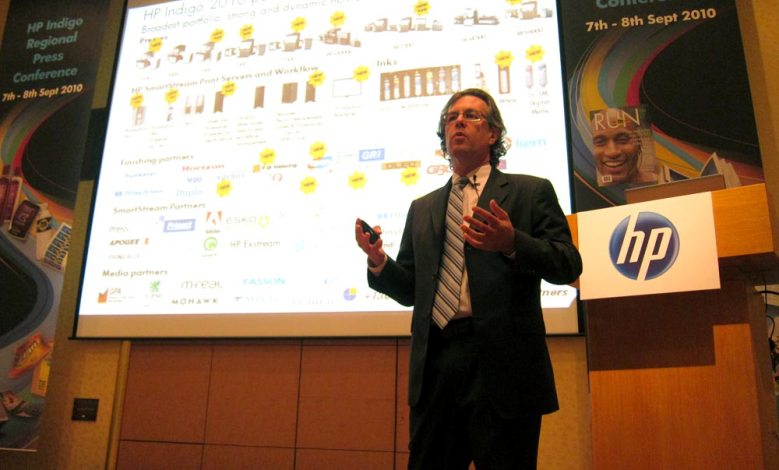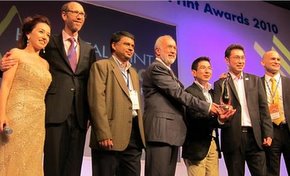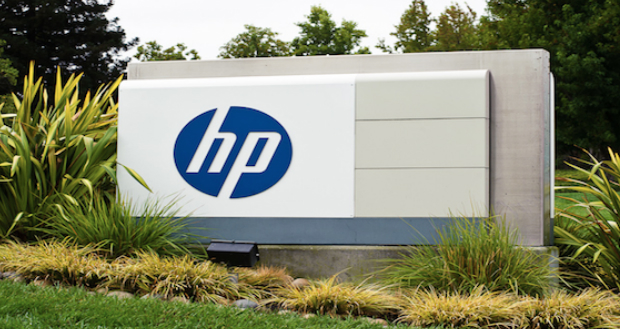
Digital is a growth sector. Asia is a booming economic hub. Put them together, and you’ve got the recipe for an upbeat marketplace with big possibilities. It’s little wonder why the Asia Pacific region is a focus for vendors, looking to find willing customers with healthy bottom lines and generous wallets.
South Korean capital Seoul is a digital city, from touch screen ticket booths at its labyrinthine subway system to the electronic billboards lining the major thoroughfares. It makes a fitting birthplace for Dscoop Asia Pacific. The HP Indigo user group was founded in the US five years ago, and is out to colonise our region.
When the group was first launched in the US five years ago, there weren’t any real intentions to expand overseas. One of Dscoop’s founders, Larry Vaughn, points out that there are some obvious advantages of holding a user group in a single nation – such as a common language – that don’t apply in a diverse region like Asia Pacific.
Take a region such as ours, and you’ve got a geographic area with more than a dozen nations and a multitude of languages and business conditions.
There are mature print markets such as Australia and New Zealand, and emerging economies with a very different technological landscape. Nonetheless, Vaughn, president of Texas-based Ideal Printers Inc, was in Seoul last month to inaugurate the group’s first foray into the wider world.
Shane Lucas, director of HP Graphic Arts South Pacific, points out that by bringing together geographically distant and economically different printers, there also an opportunity to break down barriers to communication that exist between rivals companies. Dscoop is all about letting technological peers openly share their experiences. While attendees to the event couldn’t escape the HP logo or senior personnel, the focus is on independent print providers holding discussions on their own terms.
The open forum approach is what hooked David Minnett, managing director of Sydney-based Group Momentum. The company, which started life as a pre-press house in 1976, now offers digital print as part of a communication arsenal that also covers design and creative services. Minnett says he first came across Dscoop after attending the conference in Dallas in February this year. Up until then, Minnett was as much a stranger to Dscoop as he assumes many in the Australian print industry to be.
“I had heard about Dscoop but didn’t fully understand at the time what its mission was. After attending Dallas, I found out it was a fantastic event to be able to have a dialogue and talk to and meet other people who are running the same equipment that we are.
“It creates a forum where you can talk about a whole range of issue facing your business. It could be around business development ideas. It could be about pricing or staffing or where you see things going in your marketplace. There’s a whole range of things. We already think about these things in isolation and try to make the right decision to develop our businesses and stay one step ahead.”
Trade secrets
The print industry is not famous for sharing trade secrets. Minnett agrees that he felt some trepidation about opening up about the issues facing his business. There’s a potential risk of giving away intellectual property to a group of competitors. So what inspired Minnett to get behind a movement that is all about showing your cards, instead of holding them close to your chest? He says the catalyst was a discussion with founder Larry Vaughn.
“If you are in a forum with seven other individuals that are doing the same, you are giving away one idea and getting seven ideas in return. It is such a simple but true analogy for how I have found Dscoop,” says Minnett.
But is he at all worried that such openness could come back to bite him? “In the end of the day, each one of us gets work as a result of a number of factors. It is personality. It is the type of business. It is the type of clientele you attract. It is the sort of work you are doing.
“It would be pretty difficult for the other guys to suddenly start going after your client base,” he says.
Minnett is sold on the virtues of Dscoop. Now he is mounting a push on the local market, to win over Australian and New Zealand Indigo users. “We want to reach out to every single HP Indigo user in the ANZ marketplace.”
The local steering committee has plans for two events in the forthcoming 12 months. The first, says Minnett, will focus on issues of the sustainability of digital print. He says that the topic was covered at the Asian event, as well as being a core topic at North American seminars gone by. Minnett admits that with the Christmas rush looming, he is keeping his expectations relatively low-key, and hopes interest will “grow organically”.
Target market
Dscoop is targeted at a range of Indigo users from across different spectrums of the industry, large and small, commercial and label. “We will do the first forum at a local level. We may do Sydney and Melbourne or maybe just do Sydney. It won’t be big, maybe 50-80 people,” he says.
“The second one, which we plan to strike out for around the middle of next year, will be around web-to-print. The overseas markets are developing much faster than they are here in Australia. Hopefully we will hold a forum specifically around web-to print and where we see the opportunities lying. Those are the targets and the committee will meet to formulate the ideas around that to move things forward,” adds Minnett.
Local Indigo users aren’t the only ones with something to gain here. It’s obvious that HP can benefit from expanding the user group around the world.
Ronen Samuel, HP’s Asia Pacific & Japan business manager digital presses, says page volumes of HP customers in this region have grown more than 400% over the past three years. The key growth market is, of course, China, where digital printing has been swept along in the economic miracle of the world’s most populous country. Other Asian countries, such as South Korea, have seen similar economic uplifts. While it might seem that the Asian boom would outweigh growth of digital in our own mature printing industry, Samuel says Australia is actually on par with China in terms of Indigo installations. Both countries having been dishing up 40% year-on-year growth for the vendor.
“The main difference between Australian and Chinese customers is in applications,” says Samuel. “Australian customers are developing more sophisticated applications. For instance, the photo market is much more mature in Australia than in China. The transpromo and publishing markets are much more developed in Australia than in China.”
But while China – or Asia in general – is behind in certain applications, they are catching up fast, says Samuel.
Dscoop is about this very thing, businesses from different regions with their individual differences coming together to share knowledge. Dscoop Asia Pacific was populated by HP Indigo users from across the region. They flew in from as far a field as China, Japan, Thailand, Indonesia, Malaysia, India, Taiwan, Singapore and the Philippines.
All manner of application ideas were being thrown around. There was Hong Sung-Pyo, from South Korean printer MireaN, which won a contract to replace 50,000 taxi driver license ID cards across Seoul, replacing the old-style IDs that easily became worn and fell apart.
Or Viresh Sheth from Indian packaging company Kris Flexipacks. It was started by three entrepreneurs “without a penny in their pocket” in 1984 and has grown to become a 1,000-staff company, producing packaging for blue-chip global brands.
HP’s Bar-Sharny showed yearbooks printed in the US, which had been designed to mimic a Facebook page.
These “customised, personalised and relevant” products combined the variable-data possibilities of digital with the boom in social media.
In the outer suburbs of Seoul, ProPrint visited book printer Korean Information Studies. The on-demand specialist is one of the biggest Indigo users in the country, running a mix of 5000s and 7000s. It has five machines in its 150-staff Seoul plant and another two at its 150-staff facility in China. On-demand books are still in their relative infancy in South Korea, but the printer has taken the initiative and now holds a 50% market share. Each day, it produces 28,000 colour pages and 90,000 B&W pages, across a battery of equipment that also includes Fuji Xerox iGen3s, Nuveras and Océ mono machines.
When it comes to the Aussie contingent, Minnett was not alone in getting involved with Dscoop Asia. Representatives of other local print shops got in on the act, flying out to Seoul to share knowledge. John Wanless from Melbourne-based Bambra Press is another local face who, like Minnett, was part of the group that got Dscoop Asia off the ground.
The possibilities for this movement to gain traction among local HP Indigo users are clear. Over the medium-term, the idea is that HP will pull back and let the users themselves dictate the form and function of the user group. This is what has happened in North America.
It’s all about printers working with one another – and there’s a wider lesson for our traditionally cautious industry. Whether offset or digital users, large printers, SMEs or copy shops, every print professional holds a wealth of knowledge. The Dscoop attendees ProPrint spoke to seemed thrilled to open up and learn from one another. As they say, a problem shared is a problem halved.
Comment below to have your say on this story.
If you have a news story or tip-off, get in touch at editorial@sprinter.com.au.
Sign up to the Sprinter newsletter


